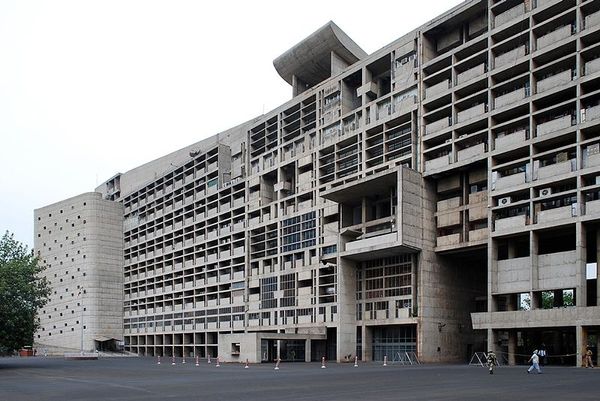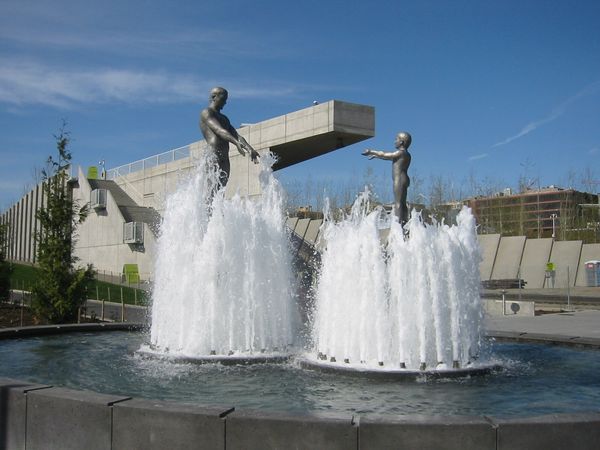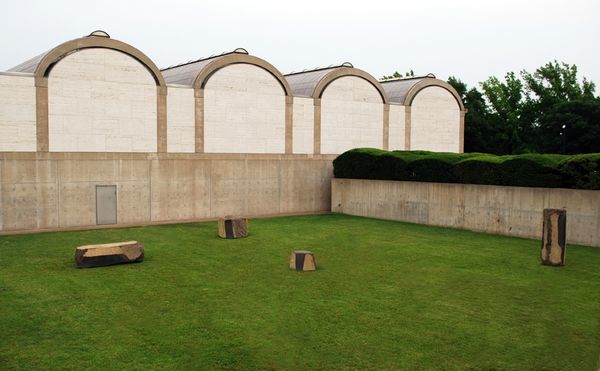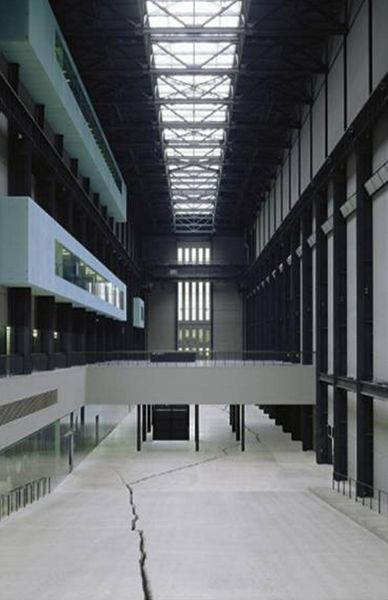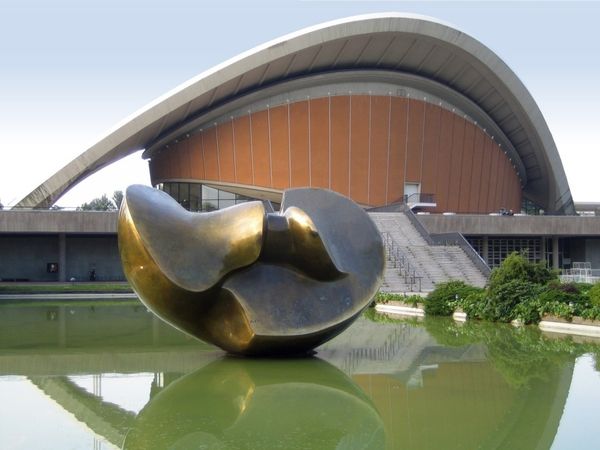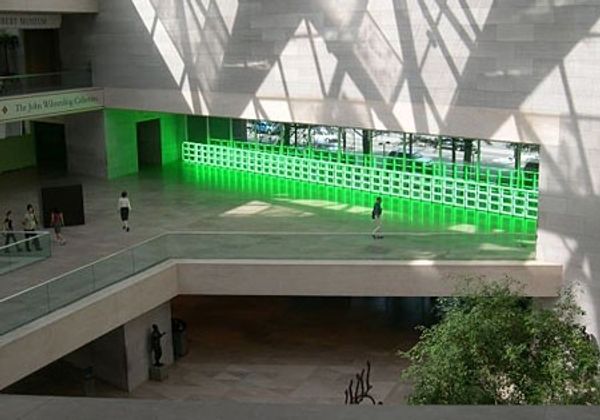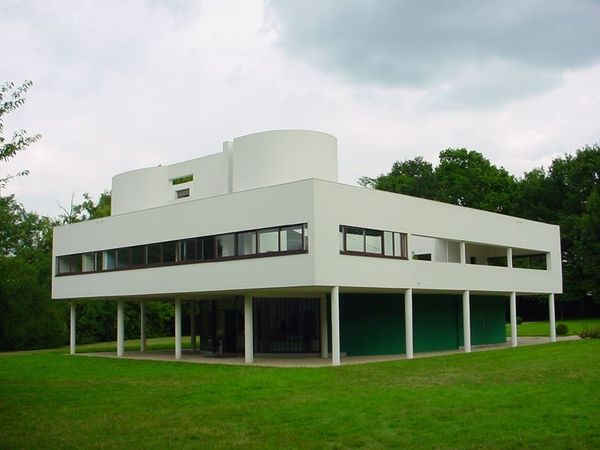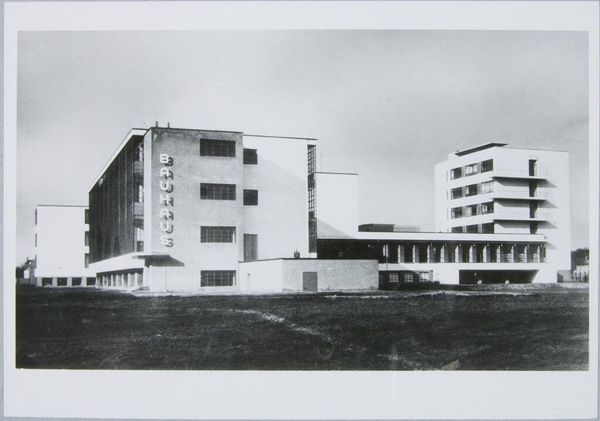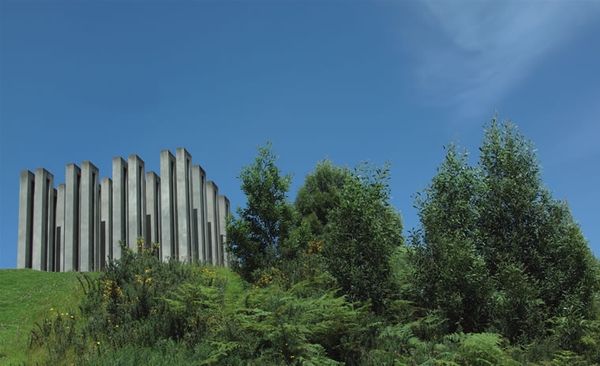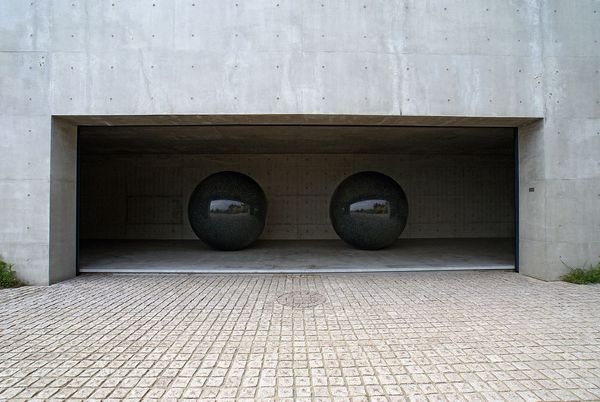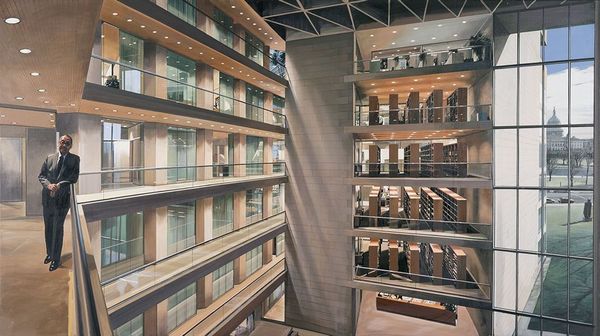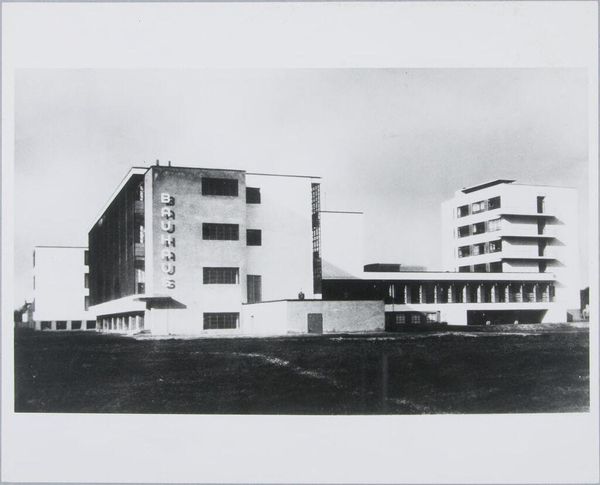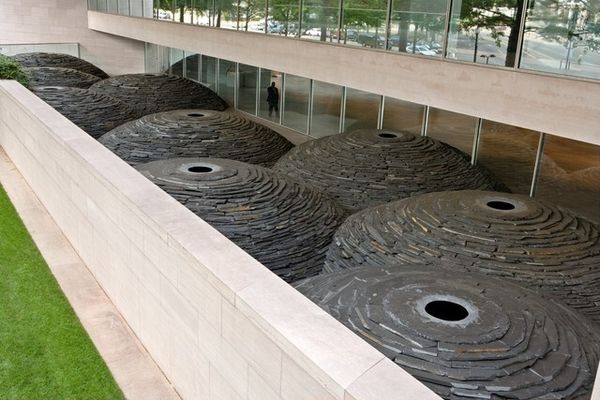
Copyright: Le Corbusier,Fair Use
Editor: This is a photograph of Le Corbusier’s Palace of Assembly in Chandigarh, built in 1955. The building itself is a massive, imposing concrete structure, reflected beautifully in the pool of water in front of it. What strikes me is how the rigid geometry interacts with the natural environment around it. What do you see when you look at this building? Curator: What I find fascinating is the socio-political context. Chandigarh was a city conceived and built after India’s independence, meant to symbolize a new, modern India. Corbusier's architecture, though Modernist in style, became deeply intertwined with the political aspirations of the Nehruvian era. The building, acting as the seat of the Punjab and Haryana legislative assembly, was designed to impress, to project power, but also to offer a modern democratic space. Editor: So, the architecture isn't just about form and function, but about projecting an image of a new India? Curator: Exactly. Think about the use of concrete. Raw and monumental, it represented a break from colonial architectural styles. But it also spoke to the socialist ideals of the time – a building for the people, built from humble materials. The scale is deliberately imposing, almost monumental. It creates a visual language for authority, right? What do you think about this language today? Editor: It's interesting, because it almost feels contradictory. The "humble" concrete also feels incredibly grand, even intimidating. It makes me think about how power is represented and perceived. Curator: Precisely. And how the intention behind that representation may be interpreted differently over time, and through diverse socio-political perspectives. This is a good example of the lasting impact architecture can have in shaping identity, both social and political. Editor: I've never really thought about architecture in this way before – as a statement about national identity and political power. Curator: And, now you have! Architecture can reveal societal hopes, beliefs, and anxieties frozen in building materials, waiting for us to unpack.
Comments
No comments
Be the first to comment and join the conversation on the ultimate creative platform.
